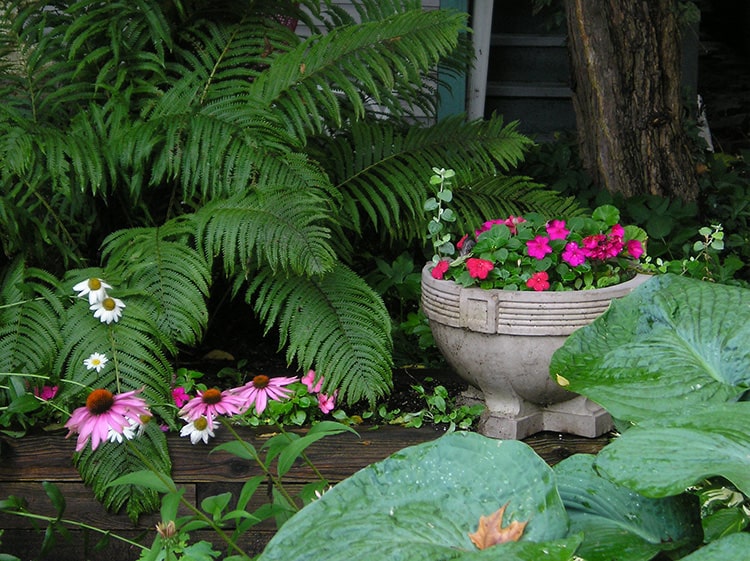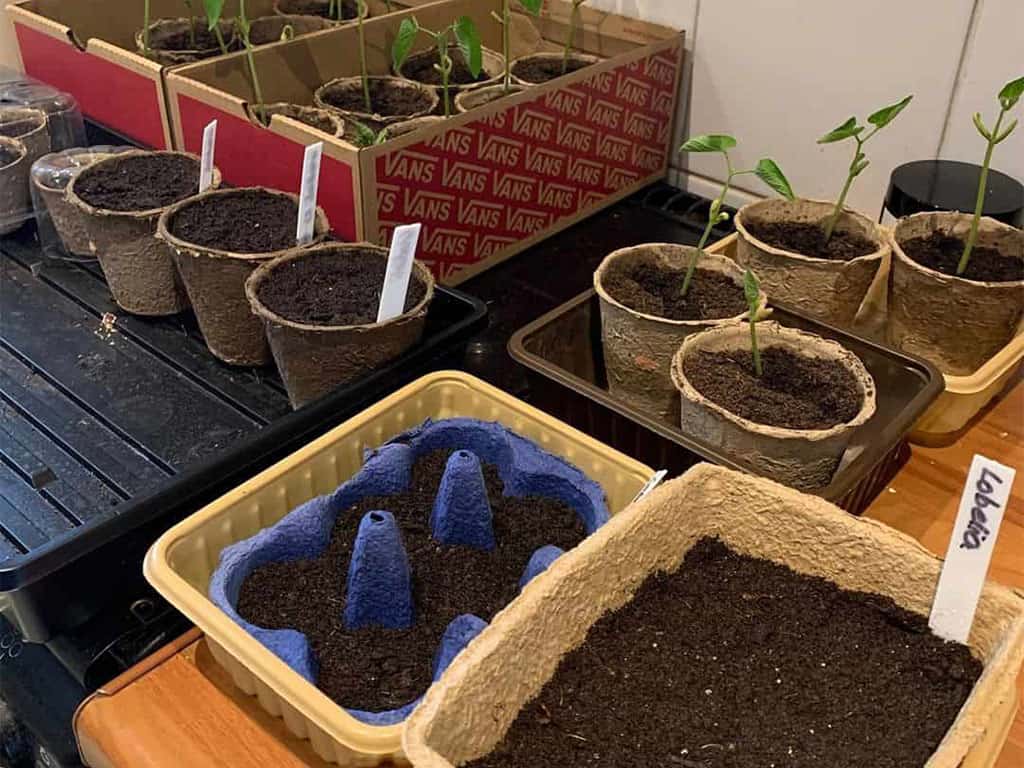As gardeners, we often hear about the importance of well-draining soil, but what does that really mean and how does it affect our plants?
In this article, we will look at the importance of well-draining soil for plant health, how to recognise drainage problems and what to do about them.
Why is well-draining soil important?
Well-drained soil has spaces between the soil particles which hold water and oxygen. These two elements are both necessary to keep your plants healthy.
Well-drained soil retains water for long enough to allow roots to absorb what they need but also drains quickly enough to allow the plant’s roots to keep breathing.

Credit: Shutterstock
If your soil retains water for too long, it can cause the plant to drown and develop root rot in the process. Poorly drained soil also makes it very difficult for the roots to grow and spread since the soil particles are packed so tightly together.
How to check soil drainage
If you’re worried about your soil not draining quickly enough, you can do a simple test to determine how fast it lets water through. Dig a hole of around 30 centimetres (12 inches) wide and deep (it doesn’t have to be exact) and fill it with water.
Once the water drains, fill it again and take note of how long the second round of water takes to drain. If you have soil that drains well, you should notice around a 2.5 to 5 centimetre (1-2 inch) drop in water level every hour. If your soil drains any slower or faster than that, you might have to make some adjustments.
Benefits of well-drained soil
Well-drained soil has quite a few benefits for plants. Here are the most important ones:
- Reduced soil and nutrient loss due to runoff
- Increased plant vitality and growth
- Warms up faster in spring
- Prevents root rot
- Increased nutrient release from compost
- Improved soil structure
- Prevents accumulation of salts that may harm your plant over time
- Promotes better, more extensive root systems
- Prevents damage to your crops
- Removes harmful chemicals and minerals in the soil
Signs of poorly drained soil
If you have poorly drained soil, it will become obvious pretty quickly. Water will pool instead of draining away and the soil will be very compacted. Poorly drained soil usually contains a lot of clay. In clay soils, the particles are very small making it easy for them to create a dense, near solid structure. There is very little space for anything in between these particles which includes water and oxygen.
It is also very difficult for plants to push these particles apart to expand their root systems. This can lead to poor growth and even death unless you choose a plant that prefers these conditions.

Clay soil holds a large amount of water; credit: Shutterstock
If your plant prefers well-drained soil, you will quickly notice a loss of vitality, dull, yellowing leaves, a horrible smell coming from the base of the plant due to root rot and even mould growth on the soil. Very quickly you will notice falling leaves and your plant will rot away and die.
Problems with soil that drains too well
On the opposite end of the spectrum, you get sandy soils that drain too well. In this type of soil, the water drains through so quickly that the plant can’t absorb enough of it to sustain itself. If this is your soil, you will notice signs of drought stress in your plants such as:
- Wilting
- Dry, crispy falling leaves
- Reduced growth
- Discoloured leaves
- Dry, crispy tips on the leaves still attached to your plant

When the soil drains too well plants suffer from drought stress; credit: Shutterstock
How to improve soil drainage
It is fairly simple to correct drainage for both clay and sandy soils. Simply add organic matter like shredded leaves, compost, hemlock bark, or peat to your soil. You can even use a combination of these for the best results.
For poorly drained soils, organic matter that doesn’t absorb water like hemlock bark works best. The bark will increase the airspace between the particles which will, in turn, improve drainage and aeration.

Fix poorly drained soils with tree bark; credit: Shutterstock
In soils that drain too fast, compost, peat and shredded leaves work great to retain some water. This will allow the plants to absorb what they need before it all drains away.
For the best results, your amendments must make up at least 30% of the total volume of your garden bed. If you’re unsure how much to use, simply spread around 7.5 to 10 centimetres (3-4 inches) of organic matter across the surface of your garden bed.
Make sure to work this organic matter well into the first 20 to 30 centimetres (8-12 inches) of soil to improve drainage enough for plants to survive.
FAQs
What happens to plants with poor drainage?
Plants that are left to stand in saturated soil for a long time will start to develop root rot, their growth will be affected, the leaves will turn yellow and start to fall off. If the plant is closely inspected you will notice lesions where the leaves burst due to being too swollen with water.

Over saturated soil causes root rot; credit: Shutterstock
Eventually, the plant will slowly wither away and die.
Which is the fastest draining soil?
The fastest draining soil type is sandy soil. The particles are very large which creates large air pockets between them. This allows water to drain through very quickly.
What are the 6 types of soil?
Soil is classified into 6 categories namely clay soil, loamy soil, peaty soil, chalky, silty soil and sandy soil. Of all these soils, loamy soil is the best for creating a well-drained substrate for plants.

Save this pin for later






